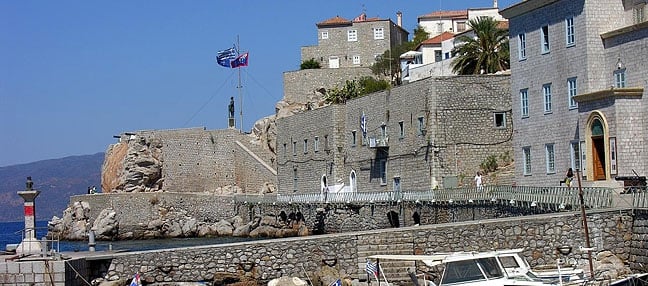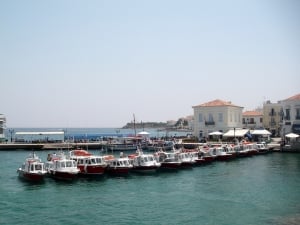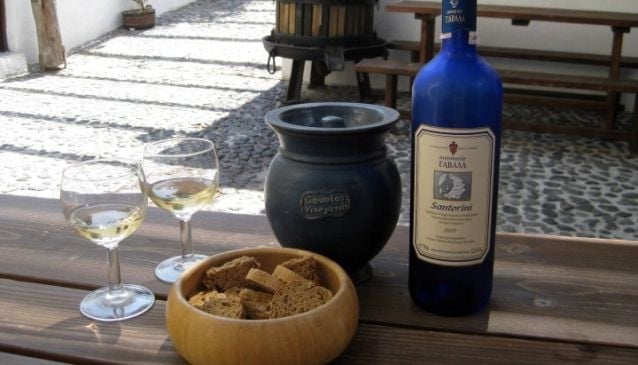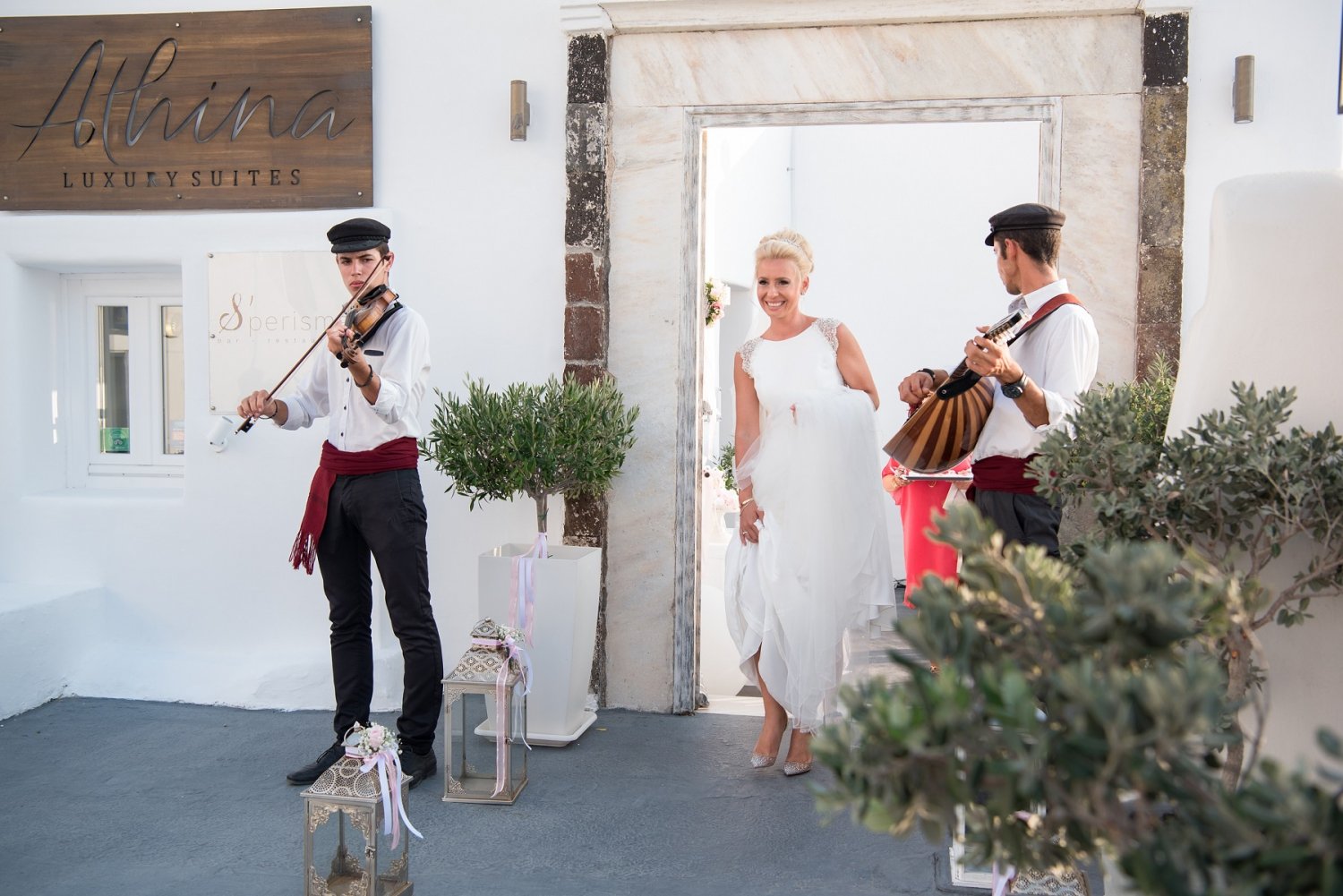Hydra

Hydra has a long and significant history. The island took that name from the numerous water springs gushing all over its land. Nowadays, water may not be abundant, but Hydra has become a unique place, a world novelty. The port and main town of the island and is one of the most beautiful and picturesque sights in all of Greece. The European Union has stated that Hydra is the best preserved traditional settlement across the entire Europe.
Although being built hundreds of years ago, it remains unchanged. If one looks at an engraving of the 17th century, you would think it has not changed anything. You wonât find a car, motorbike, or even a bicycle wandering around its streets, setting it as one of the few (if not the only) places around the world with such a clear atmosphere and unique style. The sole means of transport are the cute four-legged animals with their big ⦠ears (the donkeys).
Hydra, built in the shape of an amphitheatre on a slope overlooking the Argosaronic gulf, is one of the most romantic destinations in Greece. Traditional stone mansions, narrow cobblestoned streets, secluded squares and its 500 donkeys as means of public transportation, explain the reason why Hydra preserved its distinctive atmosphere through the passage of time.
The island experienced exceptional economic growth in the past thanks to its great naval and commercial activity. The Hydriots contributed significantly also to the 1821 War of Independence as their powerful fleet (more than 2/3 of the Greek fleet) participated in crucial sea battles. It is rather impressive that such a tiny island is the birthplace of five Greek Prime Ministers.
The "Lady of the Argosaronic" as it is commonly called, is only 37 miles from Piraeus, and getting here in less than two hours makes it an ideal escape from the daily routine or for a long weekend; some prefer Hydra for a relaxing week, enjoying the beauties of the scenery away from the disturbing spotlights of publicity. Believe it or not, this place attracts the world famous jet-setters, cosmopolitan visitors and famous celebrities and guests. Donât be surprised if next to you in a bar or the restaurant you see a familiar face or a movie star.
Lavish stone mansions owned by important families (Voulgaris, Kountouriotis, Tombazis, Kriezis, Bountouris etc), and built by Italian artisans reveal the wealth that experienced the island in the past. Today most of these mansions house the islandâs museums. 300 churches and six monasteries spread around the island as well as the cannons and the statues of the Independence War heroes still standing at the balconies of the islands create a romantic mosaic.
Hydra is a yachting paradise, every summer is full of sailing boats and impressive yachts mooring at the harbour, where they are joined by dozens of sensational motorboats. Many of its beaches (and the probably the best ones) are only accessed by the sea, together with the smaller islets around the area. Itâs worth mentioning that Hydra became famous all over the world thanks to the film "Boy on a Dolphin", shot on the island in 1957 with Sophia Loren in the starring role.
The town of Hydra has been declared listed. As you walk along the waterfront, the heart of the town, you encounter monuments, churches, canons, museums, old mansions, statues of famous heroes, the old gunpowder store, shops and cafes, while picturesque winding streets lead you to neighbourhoods located at the upper part of the town, as well as to the old neighbourhood of Kiafas. Hydra owes to its picturesque architecture of the magnificent mansions, and the rest of the houses that remain preserved by the love and respect from its local residents.
Being on foot most of the time, most of the sightseeing is just next to you while stroll around. Some of them, however, deserve your full attention. First of all, visit the islandâs museums to take in a little history:
- Historical archive-Museum of Hydra: It showcases rare archive material related to the history, tradition and culture of the island from 1708-1865. It includes an Archive Section, the Museum Section, and the Library with more than 5,000 rare books, some of them dating back to the 18th century.
- Annex to the National Historical Museum: The second most important is the house of Lazaros Kountouriotis that operates as an annex of the National Historical Museum. It was donated to the National and Ethnological Society of Greece in 1979 by Kountouriotis' descendents.
- Ecclesiastical and Byzantine Museum: Housed in the old Monastery of the Assumption of the Virgin Mary, it houses vestments, holy vessels, elaborately decorated gospel and icons, mainly from the 18th century.
- Museum of Post-Byzantine Art and History of Hydra: Housed in the mansion of Georgios Kountouriotis, the museum exhibits personal artifacts of the Kountouriotis family, as well as exhibits from the modern history of the island.
There are many places in town where you can have fun and get a flavour of the islandâs cosmopolitan aura reflecting the glory days of high 60s and 70s, when the international jet set (like Aristotelis Onassis and his friends) walked through the narrow streets.
If you feel like walking, keep your energy up as following some of the islandâs shaped trails will reveal more interesting places that you simply must see. Some of the canons are still waiting at its battlements, but you will also find nice taverns and a cosy beach.
On the right hand side of the port, you will find the small fishermanâs village of Kamini (with traditional taverns). Walking for 25 minutes on the coastline will get you to Vlychos, and after that, to Nisiza a beautiful small bay with a pebble beach (perhaps one of the best on the island).
Jacques-Yves Cousteau once visited the island and was amazed by the cleanliness at the pier of the harbour waters, where you could see all the way to the bottom, and even the tiny little fishes swimming around the boats.
- Mandraki: During the War of Independence it was used as a harbour but today it is an organised beach with excellent water sport facilities.
- Bisti: A pebbly beach, where Hydra Diving Centre organises water sport activities such as diving and kayaking.
- Vlychos: A beach covered with pebbles at Vlychos holiday resort.
- Spilia: Ideal for tan-seeking sunbathers.
- Limnioniza: Many people consider it as the most beautiful beach on the island, probably because it takes two hours hiking in order to reach it, and enjoy a swim in its turquoise water!
- Hydroneta: This beach, which lies directly beneath the cannons, has cement decks suitable for sunbathing.
- Agios Nikolaos: A sandy beach, on the west of the island. Access is only possible by water taxi.
Water Taxis can also be the easy way if you want to reach any of these beaches. Perhaps you could ask them to take you to one of the inaccessible and isolated beaches of the island, or the nearby islets. Just take the driverâs mobile number, and give him a call for your way back to the port.
- By helicopter!
There is a flat area close to town of Hydra, being used especially for helicopters (to land and take off). Air Heli, based in Porto Heli, also has air transport links to Hydra
(tel. +30 210 3601600). - There are flying dolphins departing daily from the port of Piraeus (app. 1h and 30 min.).
| SERVICE | PHONE NUMBER |
| Municipality | +30 22980-52210 |
| Police | 22980-52205 |
| Port Police | 22980-52279 |
| Hospital centre | 22980-53150 |
| National Historical Museum (Lazaros Kountouriotis) | 22980-52421 |
| Historical archive-Museum of Hydra | 22980-52355 |








